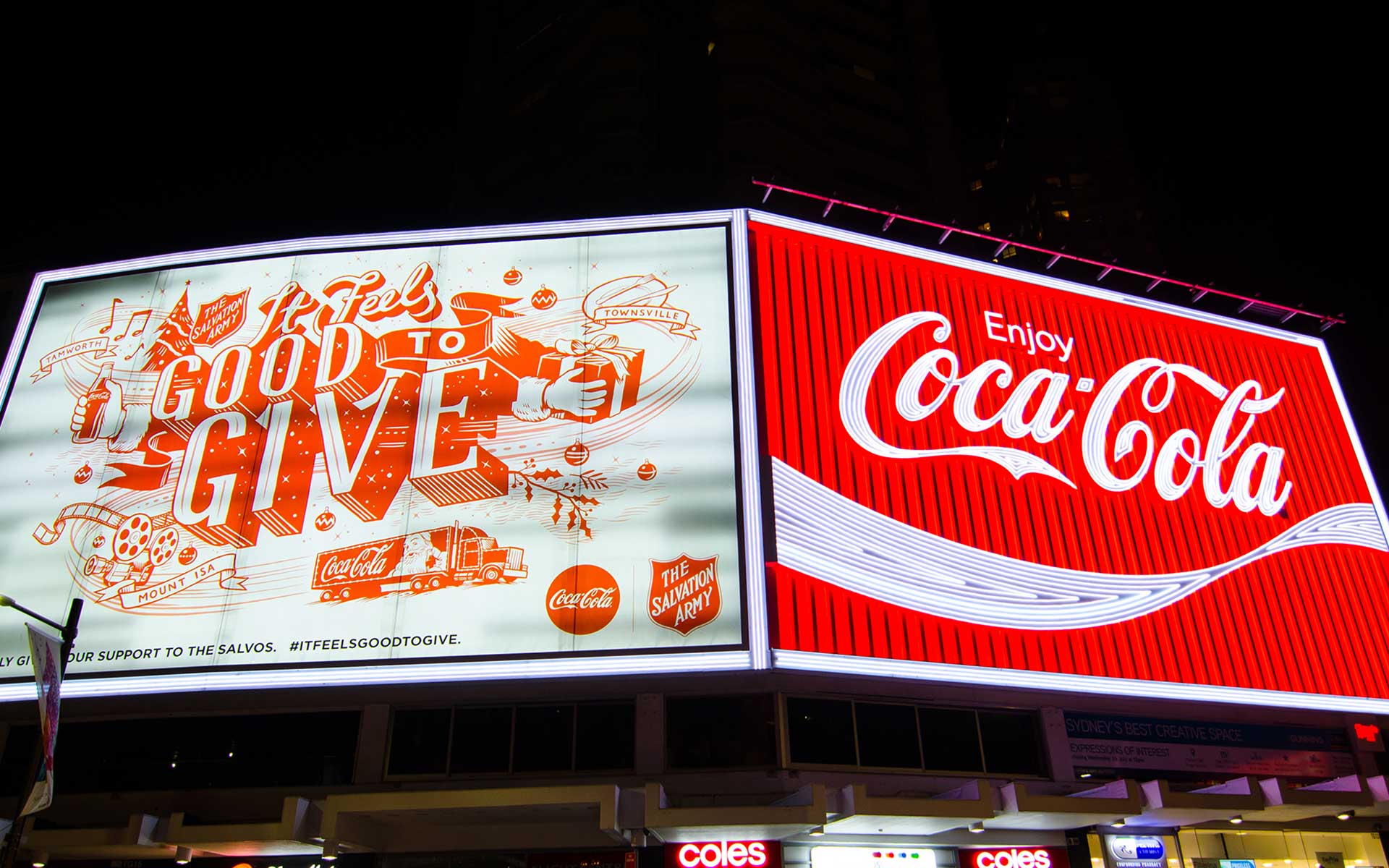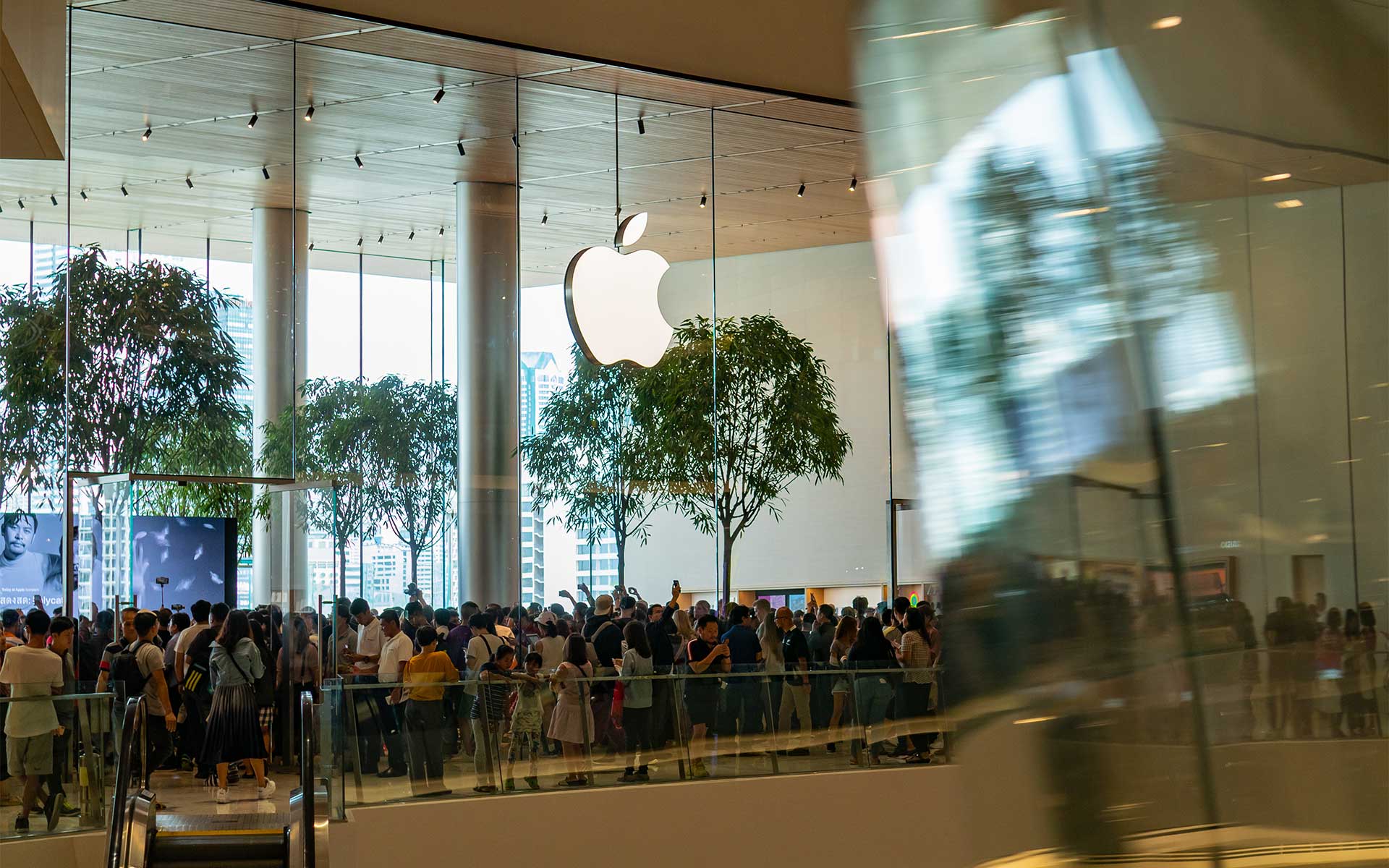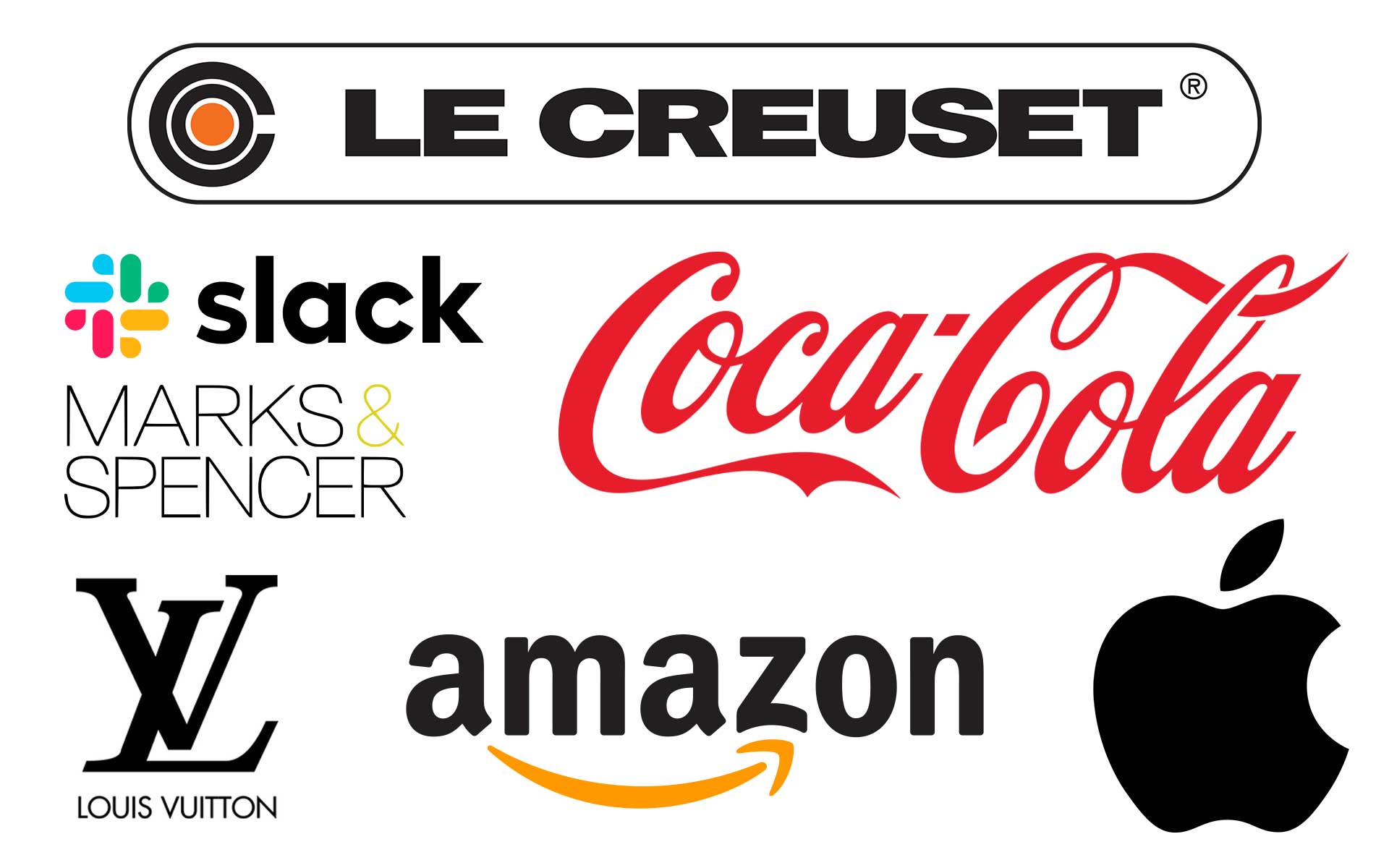
Struggling to keep your customers coming back for more? You’re definitely not alone in this challenge. Many businesses are out there, hustling just like you, trying to build that strong, loyal customer base in today’s ultra-competitive market.
Believe it or not, it’s no longer just about offering a top-notch product—it’s about forging an emotional connection that sticks with them. Interesting fact – according to research from McKinsey, companies at the forefront of customer experience are seeing their revenue grow twice as fast compared to those playing catch-up.
We’ve been right where you are, really diving into what makes a brand resonate so deeply within the minds and hearts of its audience. Through our journey, we learned something crucial: Brand loyalty isn’t something that just happens overnight.
It’s carefully constructed through consistently positive experiences and genuine engagement with your customers. This article is here to guide you on how to lay down the foundation and nurture this incredibly valuable relationship with your clientele—tackling everything from decoding brand loyalty to sharing actionable strategies for making each customer feel like they truly matter.
Got your interest piqued? Keep reading.
Key Takeaways
- Building brand loyalty means creating a strong emotional connection with customers. This makes them choose your brand over competitors, even when other options are available.
- Providing exceptional customer service and personalizing experiences based on feedback are key strategies for increasing brand loyalty.
- Rewards programs tailored to customer preferences and engaging through social media insights help keep customers coming back.
- Avoid common mistakes like failing to personalize, making processes too complex, and relying too much on discounts which can damage long-term loyalty.
- Happy customers often share their positive experiences on social media, acting as free advocates for the brand and attracting more business.
Understanding Brand Loyalty
At its core, brand loyalty is the strong bond customers feel with a brand. It’s what keeps them coming back.. time and again.
Emotional Connection
Creating an emotional connection with our customers is key. It turns a simple purchase into a lasting relationship. Studies show that brands that connect emotionally enjoy more customer loyalty.
This bond leads customers to choose us over others, even when alternatives are available.
We focus on understanding what drives our customers. Personalized experiences, based on customer feedback and preferences, make them feel valued. By engaging through social media platforms and crafting marketing campaigns that resonate on a personal level, we turn first-time buyers into lifelong fans.
Resistance to Competition
Brand loyalty makes it hard for other companies to steal our customers. When people feel a strong connection to our brand, they stick with us, even if competitors offer something new or cheaper.
This loyalty acts like a shield, protecting our market share and ensuring our sales stay strong.
We focus on building deep emotional connections and delivering exceptional customer service because we know these strategies keep our brand ahead of the competition. By prioritizing customer satisfaction and continuously improving their experiences, we make sure they have no reason to look elsewhere.
Every satisfied customer becomes a barrier against the competitive forces trying to lure them away.
Positive Word-of-Mouth
Happy customers often shout out their love for brands on social media. They post user-generated content, leave positive reviews online, and become brand ambassadors without being asked.
This natural promotion spreads the word far and wide, creating a powerful network of advocates.
We see this every day—satisfied clients telling friends and family about their favorite products or services. This not only builds our customer base but also strengthens brand loyalty among existing customers.
Positive word-of-mouth turns customers into loyal followers who play a critical role in our growth.
Tolerance for Price Changes
Brand loyalists stand by us, even when prices climb. They see the unmatched value our brand offers. This unique bond means we can adjust pricing without fear of losing them. It’s all about the balance between maintaining quality and recognizing their loyalty.
Our strategy involves careful market research and clear communication. We ensure that any price change is justifiable and transparent, keeping trust intact. By leveraging loyalty programs, we offer exclusive rewards that offset these adjustments, making sure our most devoted customers always feel valued and respected.
Repeat Purchases
We understand the value behind repeat purchases. They’re not just transactions; they are clear signs of brand loyalty. Every time a customer comes back, it’s proof that our marketing strategies, from rewards programs to personalized experiences, hit the mark.
These repeated actions show us who truly connects with our brand identity and appreciates the quality we offer.
Encouraging customers to make repeat purchases involves more than just offering top-notch products or services. It requires a deep understanding of their needs and behaviors, which we gain through social media engagement and analyzing purchase histories.
By focusing on what drives loyalty – be it exclusive deals or an online community where they feel heard – we craft experiences that keep them coming back for more. This cycle not only boosts our customer’s lifetime value but also strengthens our brand image in competitive markets.
The Importance of Brand Loyalty
Brand loyalty keeps our business thriving. It’s the heart pump of customer retention, ensuring that 65% of our revenue comes from those who stick around. This isn’t just about keeping the lights on; it’s about growing and flourishing in a competitive market.
With loyal customers, we grow revenues 2.5 times faster than our peers. They’re not just buyers; they’re our brand advocates, spreading word-of-mouth marketing like wildfire.
Creating an emotional connection with our audience turns them into a fortress against competition. If someone tries to switch brands due to one bad customer service experience, that’s an opportunity lost for us but saved by strong brand loyalty.
Our mission goes beyond making sales—it’s about building relationships where every touchpoint increases their commitment to us.
The Difference Between Brand Loyalty and Customer Loyalty
We see brand loyalty as deeply rooted in emotions. It’s about how our customers feel when they use our products or engage with our services. This perception-based connection means they choose us over competitors, not just because of price or convenience, but for the experience and values we share.
With 65% of a company’s revenue coming from repeat business, fostering this emotional bond is key to driving profitability.
Customer loyalty, on the other hand, hinges on transactions and incentives. It is reflected in repeat purchases driven by discounts or rewards programs rather than an emotional attachment to a brand.
While both types of loyalty are crucial for growth, understanding their differences helps us tailor strategies that not only incentivize purchases but also build a community of advocates who believe in what we stand for.
Strategies for Building and Maintaining Brand Loyalty
We know how vital it is for you to keep your customers coming back.. Our strategies unlock the secret to creating an unbreakable bond between your brand and its fans, ensuring they choose you, every time.
Dive in deeper with us and let’s make your brand unforgettable together.

Providing Top-notch Customer Service
Exceptional customer service sets a brand apart from its competitors. It’s a key investment in driving brand loyalty.
- Always listen to our customers’ needs and feedback. This shows we care and are willing to make changes to improve their experience.
- Response times matter. We aim to reply quickly to inquiries and complaints, reducing customer frustration and increasing satisfaction.
- Personalize the customer experience. Using purchase history and preferences, we tailor our interactions, making each customer feel special.
- Train our team regularly. This ensures they have the product knowledge and soft skills needed to provide high-quality service.
- Utilize social networks for real-time engagement. Platforms like Facebook and Instagram help us connect with our audience, offering another layer of service.
- Implement a robust complaint-handling system. We address issues promptly and efficiently, turning potentially negative experiences into positive ones.
- Encourage and act on customer feedback through surveys or online reviews. This input helps us refine our products and services.
- Offer multiple channels for support – email, phone, chat, social media – making it easy for customers to reach us how they prefer.
- Surprise and delight loyal customers with unexpected perks or rewards, enhancing their overall brand experience.
- Follow-up after issue resolution is crucial; it shows we value their business long-term, not just during a transaction.
Finding Your Brand Voice and Story
We know that emotional connection is key to forging deep bonds with our customers. This becomes the bedrock of brand loyalty, making every interaction meaningful.
- Dive into your brand’s core values:
Identifying what we stand for helps us craft messages that resonate with our target audience. Our values act as a compass, guiding our storytelling and ensuring consistency across all channels. - Analyze customer feedback:
Listening to what customers say about us provides invaluable insights. We use this feedback to adjust our narrative, making sure it aligns with their experiences and expectations. - Create a narrative around customer experiences:
Our best stories often come from the people who use our products or services. By highlighting these real-life experiences, we foster a deeper emotional connection with our audience. - Leverage social media insights:
Social platforms give us a direct line to what interests our audience. By engaging in sentiment analysis and tracking hashtag usage, we fine-tune our story to match current trends and conversations.
Collaborate with influencers
Influencers can add an authentic voice to our brand story. Their endorsement serves as a powerful tool for reaching new segments while reinforcing our message among existing fans.
Keep it consistent across touchpoints
Whether it’s online shopping, customer service calls, or advertising campaigns, we ensure our brand voice remains uniform. Consistency builds trust and aids in creating a seamless customer experience.
Encourage User-Generated Content (UGC)
When customers share their own stories related to our brand, it amplifies our message and enhances credibility through real-world examples.
Innovate continuously
We stay ahead of the curve by integrating technological advancements into how we tell our story. This includes using digital marketing tools for more personalized messaging and employing gamified elements in promotional campaigns for added engagement.
Reflect on corporate social responsibility (CSR) in your narrative
Showcasing how we contribute to societal welfare strengthens our reputation and fosters loyalty among consumers who value ethical business practices.
Measure the impact of your storytelling
Finally, we diligently track the performance of different narratives across various platforms. This data guides future strategies ensuring that we consistently engage and inspire loyalty among those who matter most to us: Our customers.
Implementing Rewards Programs
We understand the power of rewards programs in boosting brand loyalty. Data shows that elevating customer retention rates by even 5% can skyrocket profits anywhere from 25% to 95%. Here’s how we make rewards programs work wonders for building and maintaining strong customer bonds:
- Tailor Rewards to Customer Preferences: We dig into customer behavior and preferences through surveys and shopping data. This approach ensures our rewards feel personal and valuable, driving engagement and repeat purchases.
- Keep It Simple yet Appealing: Our loyalty program is easy to join and use. Customers earn points for purchases, referrals, or social media shares, which they can redeem for discounts or exclusive offers.
- Use a Rewards Card or App: By offering a digital rewards card or a user-friendly app, we make tracking points convenient for our customers. This also gives us an opportunity for push notifications about new deals or rewards.
- Offer Tiered Rewards: We’ve seen higher engagement when customers have goals to aim for. Starting with basic rewards and unlocking more prestigious benefits as they move up tiers makes customers feel valued and encourages loyalty.
- Celebrate Milestones: Recognizing customer milestones like anniversaries or birthdays with special offers not only personalizes the experience but also strengthens emotional connections with our brand.
- Leverage Social Media for Promotion: Utilizing social media marketing, we spotlight our most engaged customers and share their stories. This not only amplifies brand advocacy but also enhances brand recognition across platforms.
- Referral Programs Enhance Reach: Encouraging satisfied customers to refer friends in exchange for rewards turns them into active promoters of our brand, expanding our reach organically.
- Regularly Review Program Performance: With a dashboard that tracks key metrics, we continuously refine our program based on what’s working well and areas needing improvement, ensuring the program stays relevant and compelling.
Building a Brand Community
Building a strong brand community is like creating a family that champions our products and shares common values. We know it’s crucial for fostering high-quality engagement and drawing invaluable insights from our customers.
- Identify and Connect with Core Fans: We start by finding those loyal enthusiasts who love what we stand for. These fans become the heart of our community, helping to spread positive word-of-mouth.
- Engage on Social Media: Platforms like Instagram and Twitter are perfect for real-time interaction. Regular posts, behind-the-scenes content, and direct conversations keep the community buzzing.
- Offer Exclusive Perks: Members get access to special deals, previews of new products, or invitations to exclusive events. This makes them feel valued and deepens their connection to the brand.
- Encourage User-Generated Content: We invite our community members to share their experiences with our products online. It’s authentic, creates more content, and enhances trust in our brand.
- Host Virtual Events: Whether it’s a product launch or a Q&A session with the CEO, virtual events bring people together from all over the world, strengthening their bond with us.
- Foster Peer-to-Peer Support: Online forums or social media groups allow customers to help each other out. This not only improves customer satisfaction but also builds a sense of belonging.
- Highlight Customer Stories: Sharing testimonials or success stories celebrates our customers’ journeys and showcases the impact of our products on real lives.
- Collaborate with Influencers: Partnerships with influencers who align with our brand values extend our reach and add credibility to our community efforts.
- Utilize Analytics Tools: Monitoring engagement helps us understand what resonates with our audience so we can tailor content accordingly.
- Stay Consistent Yet Flexible: While maintaining consistent communication is key, we also stay open to evolving based on feedback from the community itself.
Utilizing Social Media Insights
We know how crucial it is to leverage social media insights to create content that hits the mark. Insights guide us in understanding what our audience loves, ensuring every post strengthens the bond with our customers.
- Dive into Analytics: Platforms like Facebook and Instagram offer detailed analytics. These tools show us which posts get the most likes, shares, and comments. We use this data to craft more of what our audience enjoys.
- Listen Actively: We monitor mentions and hashtags related to our brand across social media. This helps us catch the buzz about our products or services. Addressing both praise and criticism quickly shows we value customer feedback.
- Personalize Content: Data from social media allows us to tailor content that feels personal to different segments of our audience. Whether it’s a new mom or a tech enthusiast, everyone gets something made just for them.
- Trend Spotting: Being on top of trends keeps our content relevant and engaging. We watch what’s viral in real time and join the conversation with our unique take.
- Customer Sentiments Analysis: Tools that analyze sentiments help us gauge overall feelings toward our brand. Positive sentiments are amplifiers for loyalty; negative ones signal where we need to improve.
- Engage Through Stories: Features like Instagram Stories offer instant feedback through polls and questions. This interaction tells us directly what features or products excite our customers the most.
- Influencer Insights: Collaborating with influencers gives us access to their insights too. We see which of their posts promoting us perform best and adapt those learnings for our broader strategy.
- Competitor Benchmarks: Keeping an eye on competitors’ performance on social media informs us about industry benchmarks and areas where we can lead.
Common Mistakes to Avoid When Building Brand Loyalty
Avoiding these pitfalls in brand loyalty is key—stay tuned to learn how steering clear boosts your success.

Lack of Personalization
We know personalization is key to building strong brand loyalty. It creates a unique and meaningful experience for customers. Without it, brands risk blending into the background, becoming just another option among countless competitors.
Customers crave connections that feel special and tailored to them. When brands fail to personalize, they miss out on forming deep emotional bonds with their audience.
By incorporating customer preferences and behaviors into our strategies, we ensure each interaction feels individualized. Ignoring this can lead us to overlook valuable insights about what our audience truly wants and needs.
We strive to make every customer feel like a VIP, treating their interactions with care and precision. This approach not only strengthens loyalty but also transforms casual buyers into lifelong fans of the brand.
Complexity
Making things too complicated is a big mistake in building brand loyalty. Customers love simplicity. They want to engage with brands easily and feel good about it. A simple rewards program or straightforward customer service can work wonders.
Complex processes turn people away.
We strive to cut down complexity at every step. Our approach focuses on easy-to-understand language, user-friendly website design, and hassle-free transactions. This strategy helps in creating an emotional connection with our audience, making them more resistant to competition and tolerant of price changes.
We keep our messaging clear and our promises simpler, ensuring that every interaction strengthens the bond with our customers.
Overemphasis on Discounts
Offering too many discounts can harm our brand. It makes customers focus only on price, forgetting the value of our products. This approach turns them into bargain hunters who wait for the next sale instead of appreciating what makes our brand stand out.
We’ve seen brands lose their magic by getting trapped in a discount cycle. It doesn’t just lower profits but also attracts a less loyal crowd. They’re here today for a deal and gone tomorrow searching for another one.
Our goal is to create connections beyond just savings – showcasing product quality, customer service, and lasting value.
Failure to Track and Analyze Program Performance
We often overlook the power of data in shaping brand loyalty strategies. Ignoring to track and analyze how our programs perform can blind us to key insights. These insights could unveil missed chances for deepening customer engagement and strengthening brand loyalty.
It’s like sailing a ship without a map; we might keep moving, but we’re unsure if it’s the right direction.
Our experience tells us that companies flourish when they harness their brand loyalty capital to refine products or boost services. They rely on concrete evidence from program performance analytics.
This approach helps them pinpoint exactly where adjustments are needed, ensuring every effort enhances the customer’s journey with our brand. Without this critical step, we risk investing in areas that don’t drive loyalty or worse — neglect those that do.
Successful Brand Loyalty Examples
We’ve seen brands turn customers into loyal fans, creating stories worth sharing. Discover how giants like Amazon and Apple keep their followers coming back for more.

Le Creuset
Le Creuset stands as a shining example of how quality and storytelling create deep brand loyalty. Our customers don’t just buy our products; they enter into a lifelong relationship with us, cherishing every piece of cookware as part of their family’s story.
This emotional connection is the backbone of our brand loyalty. By consistently delivering innovative, high-quality products, we ensure that each customer feels valued and satisfied.
Our commitment to exceptional customer service plays a crucial role in maintaining this strong bond with our customers. We listen, respond, and evolve based on their feedback, creating an environment where every interaction strengthens their trust in us.
Le Creuset’s strategy goes beyond mere transactions—it’s about building a community rooted in shared values and passions for cooking and quality craftsmanship.
Marks & Spencer
Marks & Spencer takes building brand loyalty to the next level with their Sparks app-based loyalty program. We’ve seen how gifts, prizes, and personalized offers not only delight customers but also drive a powerful emotional connection.
Imagine being treated to rewards that feel tailor-made for you – it’s this kind of personalization that cements our bond with loyal fans. Plus, every purchase helps make a charitable donation, showing we’re about more than just profit.
Our loyal customers can’t help but share their love for Marks & Spencer through social media shout-outs and positive reviews. This word-of-mouth is invaluable, turning happy shoppers into true brand ambassadors.
By fostering an engaged online community, we leverage e-commerce trends to keep driving loyalty forward. With statistics revealing that boosting retention rates by just 5% can significantly increase profits, it’s clear why nurturing these relationships is at the top of our agenda.
Slack
Slack has transformed the way we communicate at work, creating a brand loyalty that’s hard to shake. By focusing on seamless integration and user-friendly features, they’ve locked in their target market.
Their secret? Providing exceptional customer service and a platform that consistently meets the needs of diverse teams. This approach aligns perfectly with research from McKinsey, highlighting how quality customer service drives revenue growth.
They didn’t stop there. Slack also uses social media insights to understand what users want, tailoring their updates and features accordingly. Building trust through reliability and innovation keeps users coming back, proving that understanding your audience is crucial in maintaining brand loyalty.
Nonetheless, through targeted solutions and relentless improvement, Slack stays ahead in a competitive landscape, making it an exemplary model of brand loyalty done right.
Apple
Apple has mastered brand loyalty, boasting an impressive score of 92% in 2021. They invest heavily in creating a bond with their customers, offering top-of-the-line products that keep people coming back for more.
Meanwhile, their strategy includes crafting devices that seamlessly integrate into daily life, making it hard to switch to competitors. By continuously innovating and providing unparalleled customer service, Apple ensures its users feel valued and understood.
They also excel in building a community around their brand. Through engaging social media marketing and exclusive events like the annual Worldwide Developers Conference (WWDC), they’ve turned customers into devoted fans.
This community eagerly anticipates new releases and is quick to spread positive word-of-mouth, further strengthening Apple’s competitive advantage in the tech world.
Louis Vuitton
Louis Vuitton knows how to keep customers coming back for more. They’ve mastered the art of rewards programs and a captivating brand story, making every shopper feel part of something exclusive.
Their exceptional customer service sets them apart, ensuring that any issue is resolved quickly and satisfactorily.
They also maintain a consistent and unique brand voice across all platforms. This approach helps make Louis Vuitton memorable in the crowded luxury market. By building an active online community, they engage with fans in meaningful ways, encouraging loyal customers to share their positive experiences through social media shout-outs and user-generated content.
Amazon
Amazon has mastered the art of keeping us hooked. They’ve turned shopping into something we can do with a simple voice command or a few clicks. Their Prime membership is the golden ticket, giving us fast shipping, exclusive discounts, and streaming services.
It’s this kind of value proposition that makes customers stick around for more.
They also understand our need for instant gratification. With options like same-day delivery in some areas, Amazon beats out competitors time and time again. It’s not just about buying things; it’s about an experience that consistently exceeds expectations.
This approach ensures Amazon remains a favorite among diverse customer segments, from busy parents to tech enthusiasts seeking the latest gadgets.
Coca-Cola
Coca-Cola keeps winning hearts by adding new flavors and styles, meeting what customers want today. They stick to their classic taste but aren’t afraid to change things up. This mix of old and new shows they’re all about innovation.
Their ads are everywhere, making sure you think of Coca-Cola when you’re thirsty. It’s not just about drinks; it’s about creating moments that matter.
Their secret? Always being there with quality that doesn’t waver and messages that hit home. By tapping into what folks feel and want, Coca-Cola has built a bond with people worldwide.
They watch trends closely and tweak their ads so everyone feels included. This dedication keeps them at the top, showing us all how brand loyalty pays off in the long run.
Conclusion
Building strong brand loyalty means creating lasting bonds, just like friendships. Simple strategies like top-notch customer service and rewarding programs make a big difference. Now, think about your favorite brands – why do you keep going back? It’s because they’ve made an impact on you.
Imagine the success your brand could achieve by implementing these steps. Let’s start building deeper connections with our customers today!
FAQs
1. What makes brand loyalty so important for businesses?
Brand loyalty is key—it’s like the secret sauce that keeps customers coming back for more. Imagine having fans who choose your brand-name products every time, over any other option out there. This isn’t just good news; it’s a game-changer, boosting customer lifetime value (CLV) and ensuring your business thrives in the long run.
2. How can companies build strong brand loyalty?
Start by understanding your target audiences—really get to know them, inside and out. Offer value propositions that speak directly to their needs and desires… Think Nike’s personalized sneakers! Plus, engage with them where they hang out; whether that’s through influencer marketing on social media or creating vibrant online communities.
3. Can social media really help maintain brand loyalty?
Absolutely! Social media is not just a tool; it’s a powerful bridge connecting brands with their followers daily… It’s where you share your story, listen to feedback, and make your customers feel valued and heard. When done right, with the help of savvy social media marketers, this strategy can turn casual buyers into loyal fans.
4. Why should brands care about creating a legacy?
A strong brand legacy resonates deeply with customers—it tells them what you stand for beyond making profits… Thanks to insights from The Business Roundtable, we know today’s consumers favor brands that contribute positively to society as well as offer great products or services. Building such a legacy fosters deep-rooted loyalty that transcends generations.
5. How do endorsements affect brand loyalty?
When celebrities or influencers endorse your product, they’re not just saying “Hey, buy this!”—they’re lending their trust and credibility to your brand name… This kind of endorsement acts as a powerful vote of confidence that can attract new buyers and reassure existing ones about their choice—strengthening trust and fostering an even stronger base of loyal customers.





